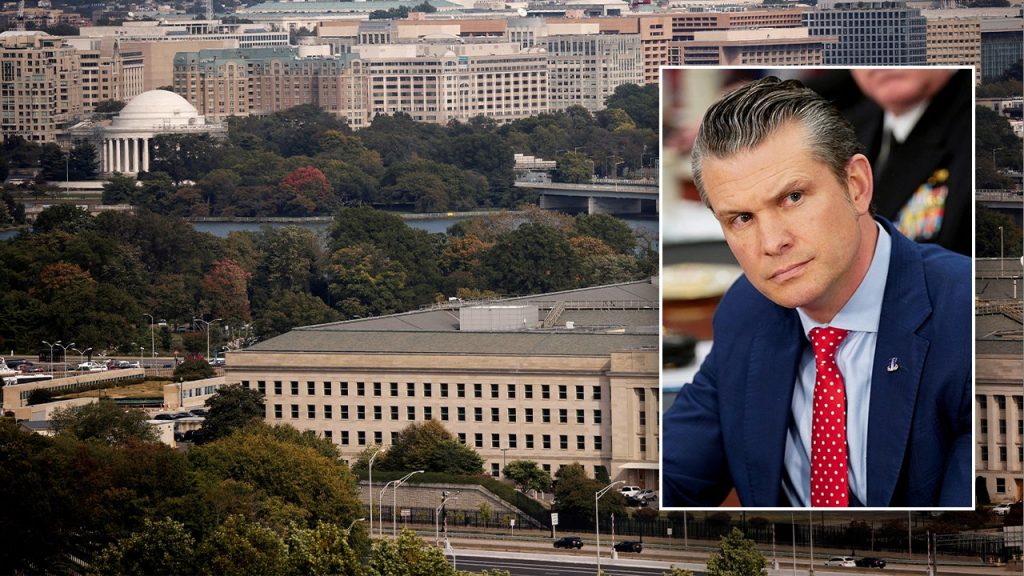War Department Insists Defense Strategy Was Developed with Full Military Collaboration
In a swift response to media reports suggesting internal division, the Department of War has firmly denied claims of a rift between civilian leadership and military brass over the forthcoming National Defense Strategy. Deputy Secretary Steve Feinberg issued a direct statement to Fox News Digital, emphasizing that the strategy was “seamlessly coordinated with all senior civilian and military leadership with total collaboration,” and dismissing contrary narratives as false. This pushback comes after The Washington Post published a report claiming multiple senior officers had expressed significant concerns about the strategy, highlighting what appeared to be a disconnect between political appointees and military leadership in shaping America’s defense priorities.
According to War Department officials, the development of the National Defense Strategy involved “extensive and intensive” collaboration throughout the department’s structure. The drafting process featured a diverse team including policy specialists, Joint Staff representatives, and service members from across the military branches. Under Secretary for Policy Elbridge Colby and acting deputy Austin Dahmer conducted comprehensive consultations with leadership across all relevant groups—an approach that one senior official described as “unprecedented” in terms of engagement from the policy office. Air Force General Dan Caine, Chair of the Joint Chiefs of Staff, reportedly provided direct feedback to Secretary Pete Hegseth and Colby, receiving assurances that his input would be incorporated into the final document. This level of coordination directly contradicts the portrayal of division suggested in media reports.
The controversy unfolds against the backdrop of broader transformations within the military establishment under the newly renamed Department of War. The department contends that the strategy document was thoroughly coordinated at the highest levels and aligned closely with the National Security Strategy, rejecting The Washington Post’s characterization of “unusually sharp pushback” from commanders regarding priorities and tone. This dispute over the development process highlights the sensitivities surrounding America’s defense planning, particularly during a period of transition and reorganization. The department’s forceful response suggests a determination to present a unified front as it implements significant changes to military doctrine and structure.
Secretary Hegseth has been actively engaging with military leadership, recently addressing hundreds of commanders at Marine Corps Base Quantico in a 45-minute speech where he advocated for tougher standards and a sharper focus on warfighting capabilities. His vision for military transformation includes recalling one-star and higher-ranking officers from global assignments for in-person briefings, as well as removing several senior generals as part of a comprehensive overhaul of leadership. These actions signal a significant shift in direction for America’s military forces and reflect the administration’s commitment to reshaping defense priorities and operational culture. Hegseth’s reform agenda appears to emphasize combat readiness and traditional military values, themes that resonate with the rebranding of the Pentagon as the Department of War.
The secretary’s new directives aim to restore what he considers essential military standards, including more rigorous physical fitness requirements, stricter grooming standards, and enhanced leadership expectations. Notably, his approach includes establishing unified physical benchmarks for combat roles across services, suggesting a move toward more standardized qualification criteria for frontline positions. These changes represent substantial adjustments to military culture and operational policies, occurring simultaneously with the development of the contested National Defense Strategy. The timing of these parallel initiatives may contribute to the perception of friction within the department, as career military professionals and new political appointees navigate significant organizational changes while also formulating long-term strategic guidance.
As this situation continues to unfold, the Department of War’s emphatic rejection of reported divisions highlights the high stakes involved in defense policy formation. The implementation of the National Defense Strategy will significantly influence military preparedness, resource allocation, and America’s global security posture for years to come. While the department insists on a narrative of unity and collaboration, the public dispute over the strategy’s development process reveals the complex dynamics at play when reshaping national defense priorities. How effectively civilian leadership and military professionals harmonize their perspectives will likely determine not only the coherence of America’s defense strategy but also the operational effectiveness of its armed forces in addressing evolving global threats.


